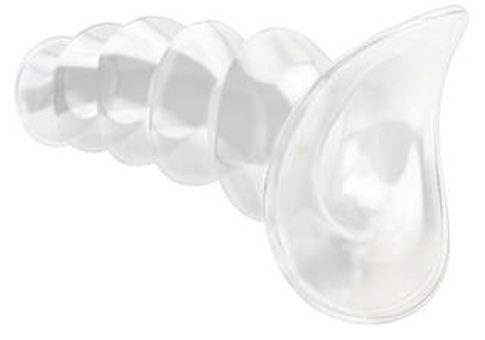Taxpayers have paid more than $2.4 million to develop "origami condoms," including male and female versions, and the "first of its kind anal condom."
Out to "reinvent the condom," Los Angeles businessman Danny Resnic has completed the first rounds of testing for three variations based on Japanese folding paper, courtesy of the National Institutes of Health.
The Eunice Kennedy Shriver National Institute of Child Health and Human Development initially spent $212,162 for a feasibility study on Resnic’s "new condom" in 2006. The idea was a non-rolled, silicone-based condom that "increases pleasure" and is more effective at preventing sexually transmitted diseases.
The issue is important to Resnic who said a broken condom in the 1990s changed his life.
"We all know that latex condoms don’t feel great. They break, they slip, and they interfere with intimacy," Resnic said, sporting green neon shoes and sitting next to an outdoor fireplace for a promotional video on his website.
"From my perspective, the latex condom, designed in 1918, just got it wrong," he said. "In 1993 I had a life-changing incident, a broken condom and an HIV diagnosis. This drastically changed my view about condoms."
"Like many people, I don’t love condoms for the obvious reasons," Resnic continued. "Do you know anyone who does? What if there was something new and radical that you loved using instead of latex condoms?"
Resnic says he has done just that, creating a design that gives the feeling of "sex without a condom: the real deal."
Perfecting his condoms would not be possible without the U.S. taxpayers. "Generous research and development funding" provided by the NIH supported Resnic’s company’s research and development and four Phase I clinical trials. Since 2006, he has received $2,466,482 to test the three variations.
The NIH’s National Institute of Allergy and Infectious Diseases then began funding Resnic’s clinical trials in 2009, providing two grants worth $1,130,670 to design and test the Origami RAI condom for "receptive anal intercourse."
The "feasibility and acceptability study" tested the anal condom, which is "worn internally by a receptive male or female partner," on 24 couples.
The condom is intended to "provide better sensation and less breakage" and to "increase the acceptability of condoms among those who practice anal intercourse and are at risk of HIV / STIs."
"Unlike the off-label use of the rolled latex male condom, the [origami anal condom] OAC creates direct tactile contact for the penis inside the internally lubricated condom," the company said. "The Top partner does not need to wear a condom, creating an experience closer to ‘sex without a condom.’"
"You can walk around and do most any activity with the condom pre-inserted," Resnic said.
The anal condom is expected to hit the market in late 2015. It is undergoing further clinical trials.
Additionally, Resnic received $591,950 to test his "Origami female condom" on 40 heterosexual couples.
The female condom’s design provides "maximum protection against breakage, slippage, and viral permeability." It features a "unique patented reservoir designed to minimize semen backflow," the grant said. A video demonstration is provided on Resnic’s website.
Finally, the initial study for the "Origami male condom" cost $531,700, beginning in 2011. The male and female versions, which can "accommodate a range of penis sizes," are also expected to reach the market in 2015.
"I am grateful for the support from the epidemiology research community and the NIH, without whom these innovations would not be possible," Resnic said on his website.
Resnic’s version of the male condom has received praise for its original design, being the first non-rolled, "accordion-folded" condom.
"We re-invented the condom," a promotional video on the Origami condom website said. The video will be used on social media to market the products, since the Federal Communications Commission (FCC) restricts their advertising on television and radio.
Set to electronic dance music and neon colors, the 30-second promo begins with a song:
We’ve realized that people are still having sex
They’ve been told not to
Perhaps they are perplexed
When you see them holding hands
They’re making future plans to engage in the activity
Do you understand me?
People are still having sex
Lust keeps on lurking
Nothing makes them stop
Indiegogo from ORIGAMI Condoms on Vimeo.
"We did not anticipate the marketing challenge with FCC restrictions on media placement for the condom ads on TV and radio," Resnic said. "The FCC will not allow a condom to be shown on TV, and radio messages have language restrictions. This makes it really difficult to market a product that cannot be seen or discussed."
Resnic, who studied design at the Art Center College of Design in Pasadena, Calif., said the "strategic" promo works around the FCC rules. "Origami condoms won’t go viral, but our promo should," he said.
The Origami condom has been praised by the Bill and Melinda Gates Foundation, which is also providing millions in research for new condom designs. The billionaire and Microsoft founder is a strong proponent for increasing contraceptive use in developing countries in response to "population growth."
Resnic also sees his products as being used around the world.
"In the long term we believe we can make a sustainable and measurable difference to reduce incidence of HIV and unplanned pregnancies on a global scale," he said.
Requests for comment from NIH were not returned.
